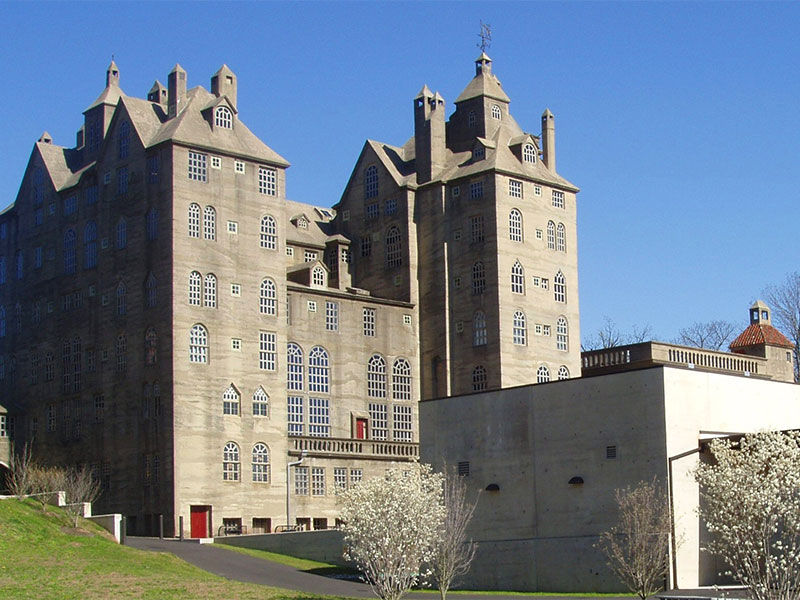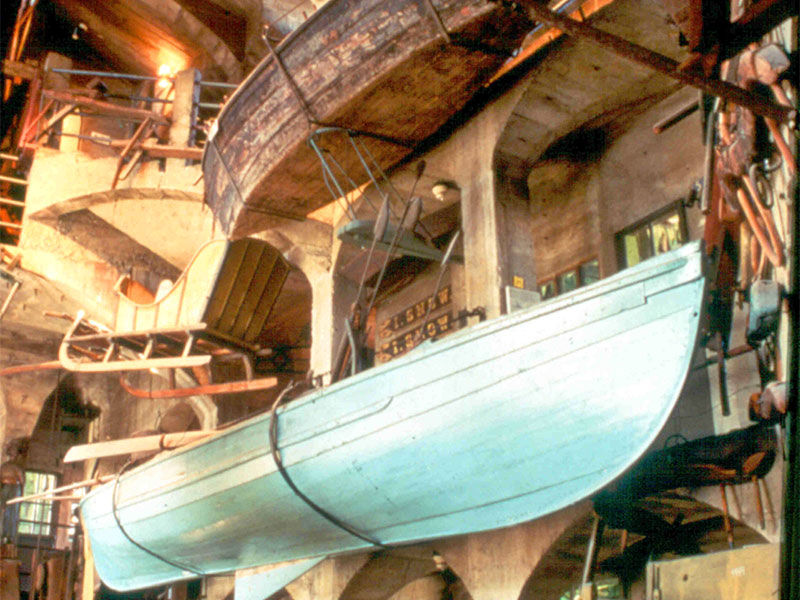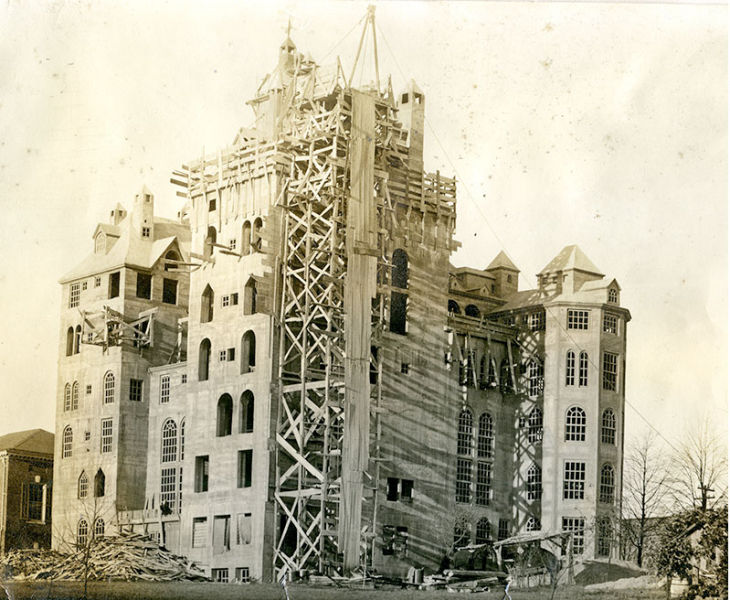Mercer Museum Centennial
Cara O'Donnell Summer 2016
THE MERCER MUSEUM: 100 YEARS OF INNOVATION
From the moment a visitor steps foot into the Mercer Museum in Doylestown, the property promises to be quite an experience. The huge concrete castle looms, its turrets casting unique shadows around the grounds. Inside, there are objects and artifacts everywhere. Blacksmithing and weaving tools. A vast array of kitchen items. A gallows. The enormous whaling boat suspended from the ceiling. At first glance, it may look like a random hodgepodge of items collected over the years. But look a little more closely, and visitors may soon realize they’re really discovering a century of innovation.
“A visit to the Museum is really a visit to the imagination,” says Cory Amsler, Vice President of Collections and Interpretation at the Museum. “Imagine using the objects and the people who used them. All were in their time innovations and inventions.”
The Mercer Museum is the collection of Henry Chapman Mercer, who built the eccentric concrete castle that houses the extensive collection of objects representing everyday life in the pre-industrial age. It was his third such concrete castle; he also built the adjacent Fronthill Castle, which served as his home, and Moravian Pottery and Tile Works, which today showcases Mercer’s skills as a potter. The Mercer Museum is celebrating its Centennial this year with special exhibits and events that pay homage to its founder and his vision of celebrating the handcrafts and tools needed to create and construct during daily life of pre-industrial America.
“Mercer would certainly recognize the place if he walked in today,” says Amsler. Much has remained unchanged for the building and exhibits; in fact, approximately a third of the original exhibits as installed by Mercer are still in their same location. The seven-story museum is vertical in nature, with exhibits located in 55 rooms and alcoves all centering around a central courtyard. Tools and objects relating to things like food, shelter and clothing are centered on the lowest levels. As visitors ascend, they’ll find items relating to commerce, like leatherworking tools, engraving stations, surveying and navigation items, and even a Conestoga wagon on middle levels. As visitors reach the top levels, they will explore unique items such as the gallows, stoves, and a variety of changing exhibits. It’s a vertical hierarchy of needs, so to speak.
But what has changed, especially in recent years, is the audience and what the audience perceives as relevant. A library was added. So were several children’s and family galleries to make the Museum experience a little more interactive. In addition to Mercer’s permanent collection, the Museum in more recent years has also added a changing exhibition gallery to give them the chance to delve more deeply into the collections and share stories, as well as bring in exhibits from outside the institution.
“We’ve expanded our vision by providing a place for people to come and experience the past in very creative and engaging ways,” says Amsler. “A collection like the Mercer Museum is inspiration for how problems are solved.”
For this year’s Centennial, dubbed “Re-Discover An American Original,” the festivities will both showcase changing exhibits that engage visitors but also honor the original collection of early American objects and the amazing concrete castle structure that houses them. A “Free for All” day will take place on Saturday, July 16, with free admission at the Mercer and its sister museums in Doylestown to celebrate the Centennial.
Throughout the late spring and summer, a special Heritage Artisan Series will take place, during which artisans will bring the tools of the museum to life by demonstrating various crafts like blacksmithing, woodworking, glassblowing and more. The series pays homage to the museum’s former Folk Festival, which showcased traditional tools and processes in a hands-on way.
During the autumn, the Mercer Museum’s Central Court will be transformed into a unique theatrical space for a series of public storytelling performances that draw inspiration from the Mercer Museum’s collections. Mercer himself loved storytelling, and the series will draw on his own visions, from tall tales and everyday heroes to tales of mystery and macabre, that relate back to the Museum’s collections.
Additionally, beginning in July, the Museum is hosting a special temporary exhibit titled “Long May She Wave: A Graphic History of the American Flag.” The American flag is of course, one of the most recognizable icons in the world today, and it has enjoyed a long history of graphic renderings and artistic reinterpretations. From Civil War-era flags and Native American moccasins to political campaign buttons and original flag art, “Long May She Wave” assembles thousands of American flag-related objects. This exhibition not only celebrates the Museum’s Centennial, but also the Centennial of Flag Day, established by President Woodrow Wilson.
The centerpiece of the museum’s celebration; however, remains Mercer’s own vision. Amsler explains that there simply were not many others collecting and treasuring items that Mercer collected at the time. He had a unique vision, seeing something special in the tools that met the needs and wants of individuals prior to the Industrial Revolution.
“We want to fire people’s imaginations. Whether it’s people who are impressed and inspired by this one individual’s efforts to collect and preserve and to build an extraordinary landmark structure – they may be inspired by that,” explains Amsler. “Or it may be the virtue of seeing the collections and imagining the people whose lives lay beyond those innovations. We want people to be inspired to be similarly genius. It boils down to inspiration.”
The Mercer Museum in Doylestown is open daily except for Thanksgiving Day, Christmas Day, and New Year’s Day. Hours are Monday through Saturday 10 a.m. – 5 p.m. and Sunday Noon – 5 p.m. Admission is $14 for adults, $12 for seniors, and $8 for children ages 6-17. Special Mercer Experience Tickets, which provide admission to both the Mercer Museum and the adjacent Fronthill Castle, which was Mercer’s home and now houses an impressive collection of his Moravian tiles and pottery, are available.




SHARE
PRINT